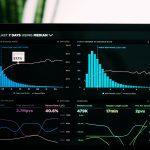Finding the right dashboarding tool that connects all of your data, in real-time, is essential for business leaders to identify risk and make data-driven decisions. There are several different models organizations can use to calculate ROI. Using them together offers a more complete and compelling story of the value of your Business intelligence investment as it matures.
Different ways to measure ROI
In a couple words, we suggest you don’t focus on cost, but on value. But let’s see how the analytic measurement evolved through time:
- Total cost of ownership (TCO) — The most obvious approximation is to measure the software licensing cost, however, there are many others: platform costs, like hardware and software, plus the labour costs to deploy and support the solution. Still, there are some disadvantages as TCO falls short of providing a full-scale view of ROI if you want to consider other ways the technology adds value to the organization.
- Worker productivity — If it’s possible to reduce the time your employee spends on analysing the metrics, it’s most likely we say “go for it” as he or she will have more spare time for other activities. However, it has to be seen in every case in detail.
- Expected impact — What’s the value of your employees making better decisions with analytics? With a mature analytics program, you’re likely to estimate the payouts of data-driven decisions. Although this presents the most challenges to quantify, it’s also the most accurate way to evaluate the impact on real business outcomes.
But not everything can be measured with a cost-effective approach. What we are talking about is… knowledge. There are examples of how analysts of Southwest Airlines discovered opportunities to add new, direct flights closer to customers’ homes, thanks to patterns in customer data. Or sometimes while exploring data, a curious person may stumble across a finding with significant one-time impact. For example, through an embedded analytics solution, a customer of RollMaster found that they were losing as much as $100,000 when a salesperson stopped offering a certain product. This insight came after just 15 minutes of exploring the data in a new, visual way.
Here’s a famous graphic example of a creative process struggle that can easily be applied to dashboarding creation. The first messy stage is when actual insights occur. So conflicting and complicated as it may seem it’s still worth it.
The Process of Design Squiggle by Damien Newman, courtesy of thedesignsquiggle.com.





